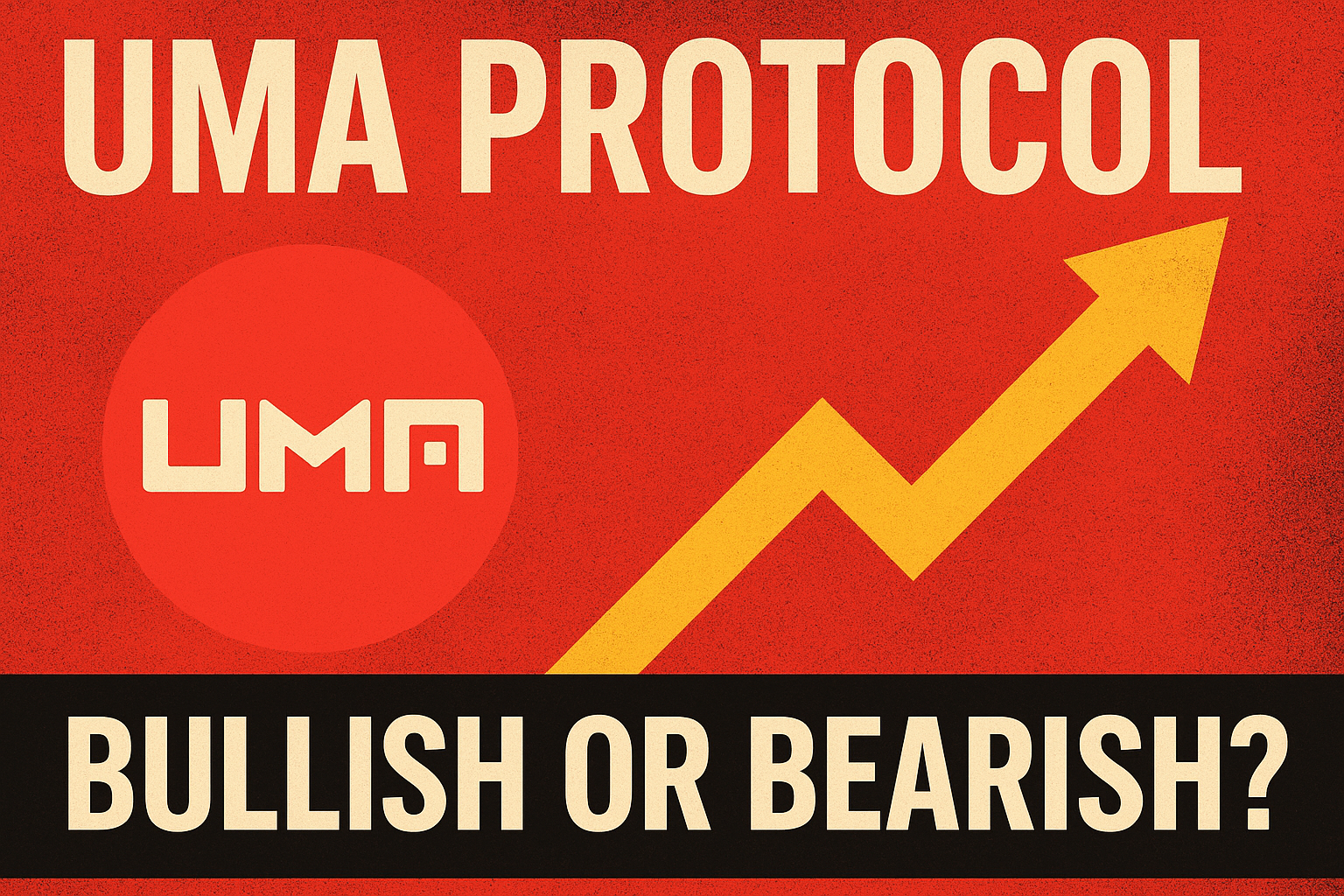
TL;DR: UMA sits between innovation and skepticism. Can AI-driven efficiency and bank adoption outweigh governance doubts?
UMA Protocol has been making headlines lately, and the conversation around it is heating up. On one side, its AI-driven efficiency and growing partnerships are fueling bullish sentiment. On the other, questions about governance and decentralization are raising eyebrows. Let’s break it down.
1. AI-Driven Oracle Growth – Bullish Signal
In the first half of 2025, UMA’s Optimistic Oracle processed over 7,000 proposals per month, a massive scale-up made possible by AI integration. Bots are now resolving disputes in seconds at just $0.005 per request. This efficiency isn’t just a tech flex—it directly strengthens UMA’s partnership with Polymarket, which runs over $1B+ in monthly betting volume. Lower costs and faster dispute resolutions make UMA more competitive as the go-to oracle for high-volume prediction markets. For traders, this signals scalability and sustainability—two things the market rewards.
2. Technical Breakout Momentum – Bullish Signal
According to CoinMarketCap’s trading desk, UMA recently cleared the $1.60 resistance, eyeing a move toward $1.70. With a 31.64% gain over the past 60 days, the technical picture shows conviction. Traders are placing stop-losses near $1.50, which suggests a strong bullish setup as long as that level holds. Combined with the 12.67% 24h price surge, UMA’s momentum is aligning with its fundamentals—something we don’t always see in crypto markets.
3. Governance Controversy – Bearish Signal
But it’s not all smooth sailing. A $160M Polymarket bet on Zelenskyy’s attire was overturned by UMA validators in July, sparking claims of whale-driven manipulation. Reports show that the top five holders control 42% of UMA’s supply, undermining UMA’s claim to decentralized truth resolution. And with the new MOOV2 upgrade restricting proposal rights to just 37 whitelisted addresses, critics argue that UMA risks centralizing power even further. For a protocol built on trust and neutrality, this is a red flag.
4. Institutional Adoption – Bullish Catalyst
Perhaps the biggest development: SoFi’s partnership with Lightspark to use UMA for cross-border remittances between the U.S. and Mexico. This taps into a $740B global remittance market. Real-time transfers via Bitcoin Lightning and UMA’s Universal Money Address could boost UMA’s transaction volume, driving utility and fee revenue. If adoption scales, it may serve as the validation UMA needs to break out of the “crypto niche” and into mainstream financial use cases.
Conclusion
So where does this leave us? UMA is clearly at a crossroads. AI and institutional adoption are undeniable bullish forces, while governance centralization and whale influence remain real risks. Traders will be watching the $1.65–$1.70 resistance zone closely, but the bigger test will come in Q4 2025 as SoFi’s integration goes live.






